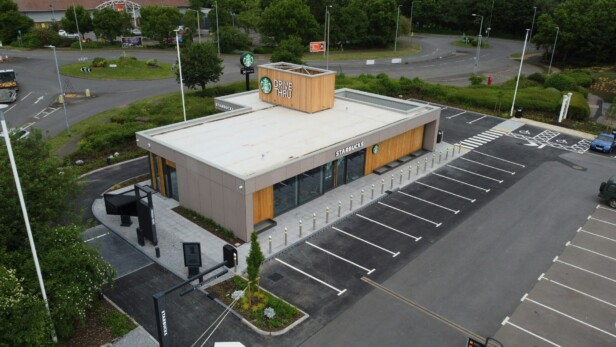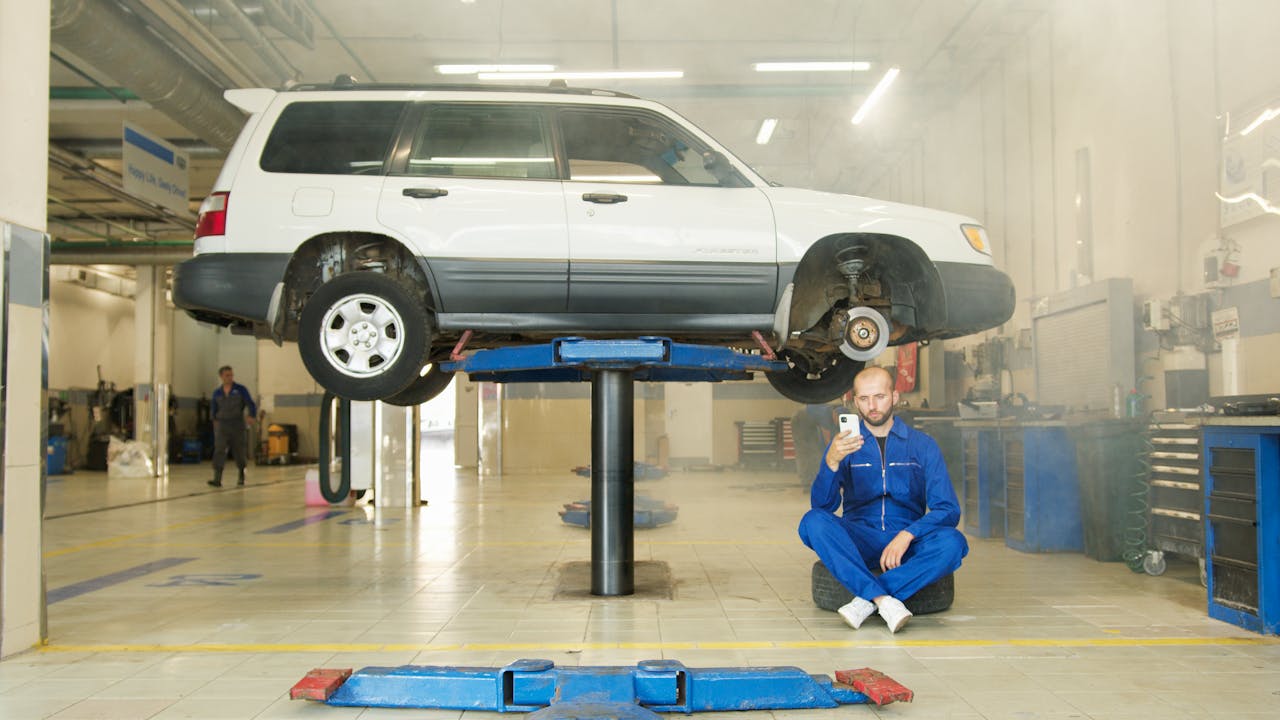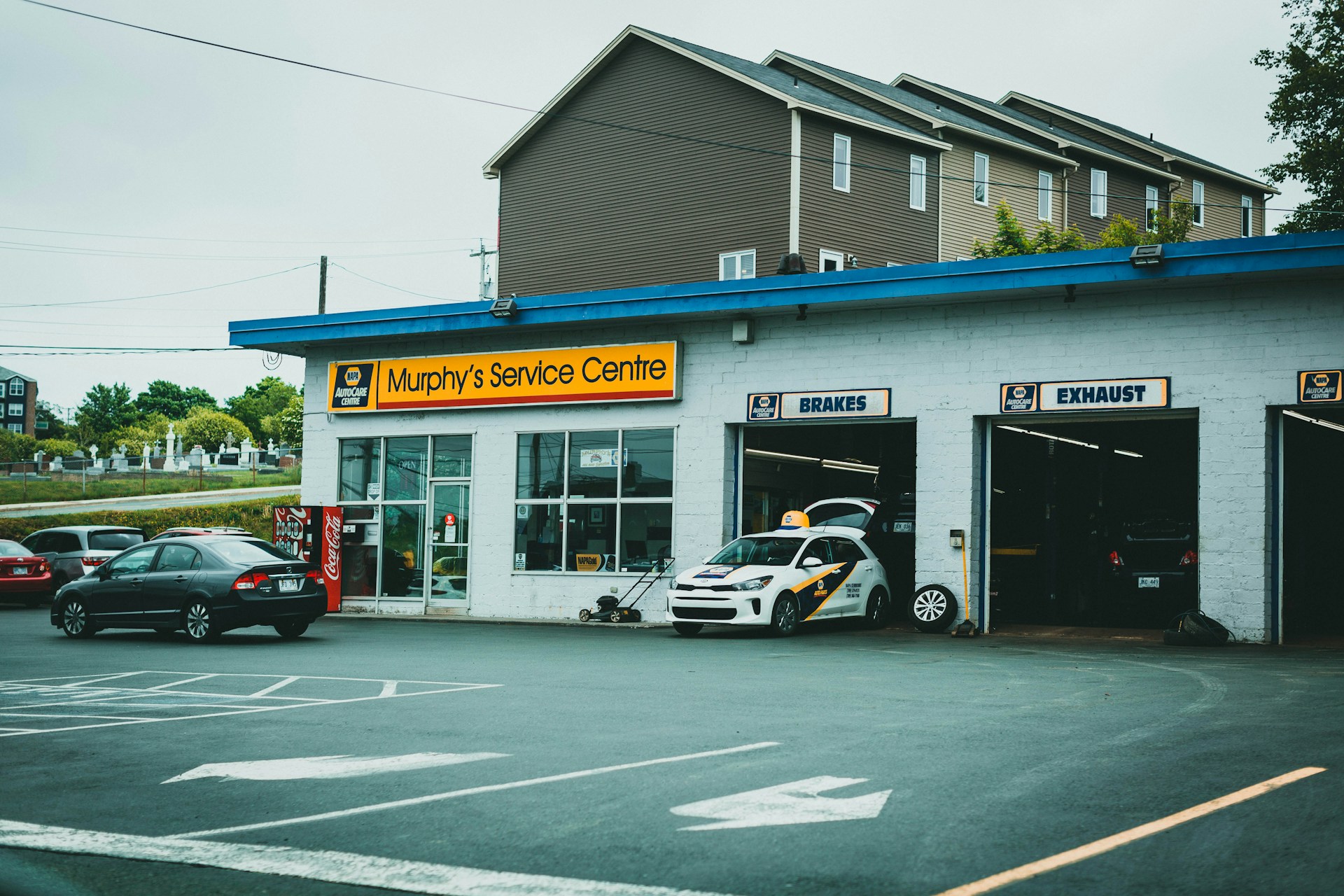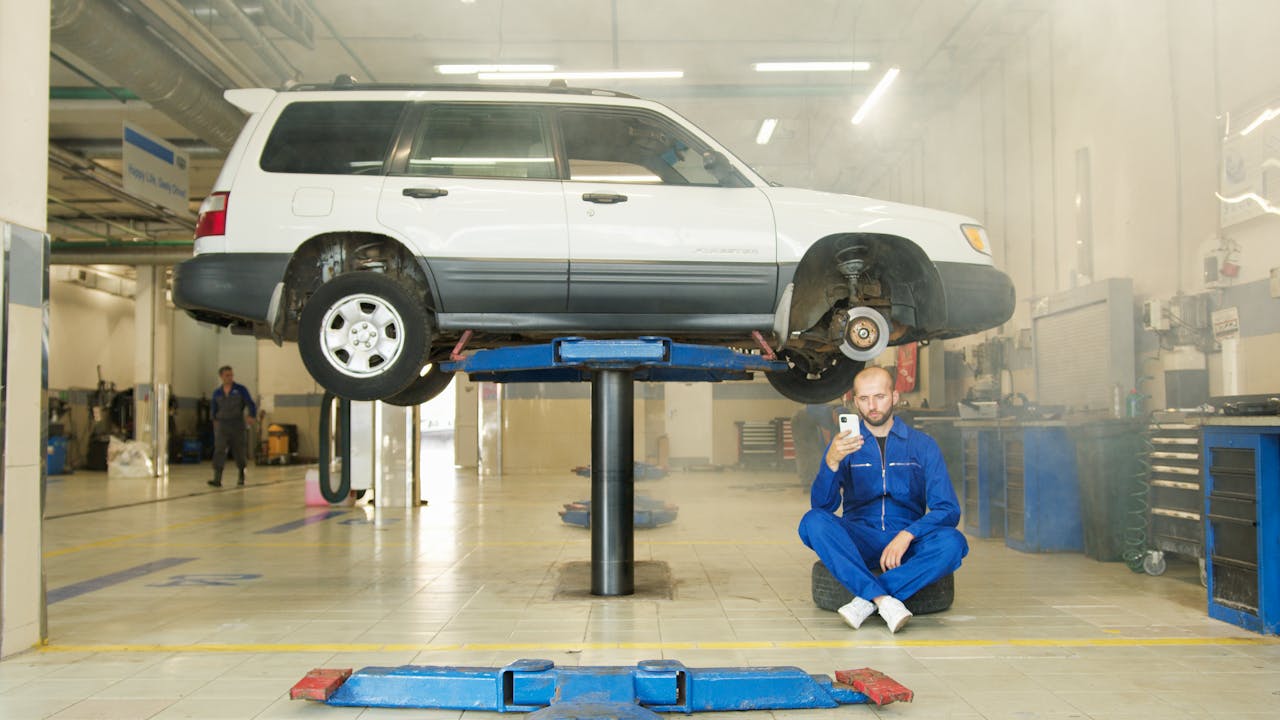Arlington has become a common name across the United States, creating unique challenges for developers and contractors navigating local regulations. Three major Arlington jurisdictions tackle drive-thru stacking requirements differently, each with distinct codes that shape how we design and construct these facilities.
Drive-thru stacking requirements in Arlington depend entirely on which Arlington governs your project. The regulations address traffic operations and queue management through separate frameworks that reflect each community’s priorities and development patterns.
How Does Arlington, TX Reference Drive-Through Stacking In Its Code?
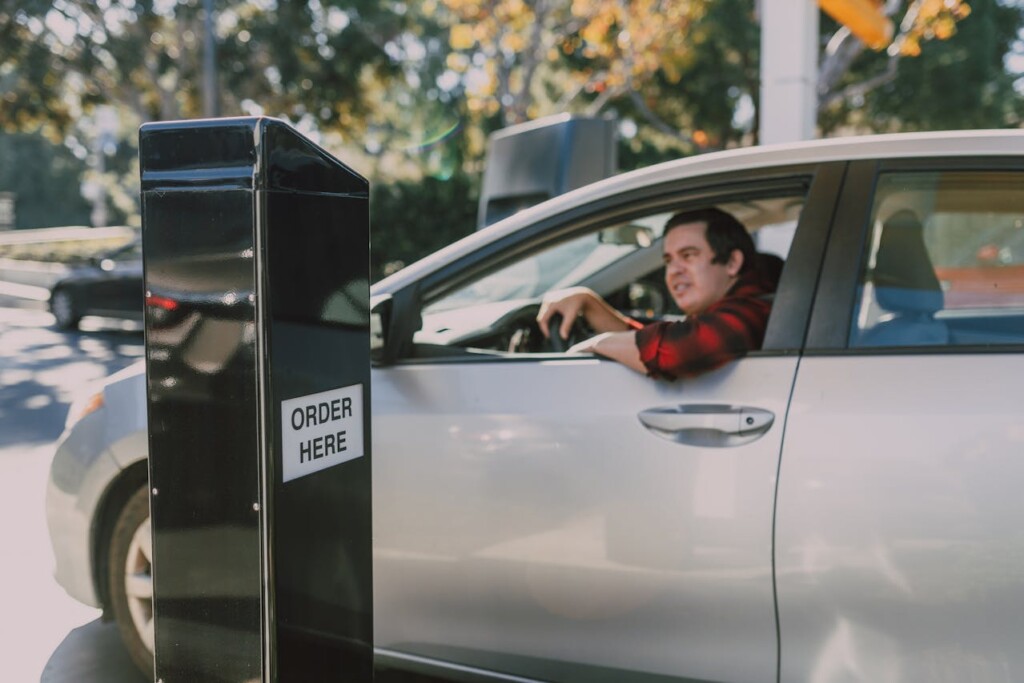
Arlington, TX handles drive-through stacking through its Unified Development Code. We reference Section 5.4.6, Drive-Through Vehicle Stacking and Noise Reduction Standards, within the off-street parking requirements. This section may apply to certain uses that include drive-through facilities.
The code doesn’t operate in isolation. Multiple Article 5 standards work together to shape drive-through layouts and operations. These interconnected requirements create a framework that addresses both immediate stacking needs and broader site functionality.
Parking Space Standards That Affect Drive-Through Design
Standard parking space dimensions set baseline requirements. Each space must measure at least 18 feet in length and 9 feet in width. We can reduce spaces to 16 feet in length when tire-stop curbs are installed, provided we maintain a clear 2-foot vehicle overhang space and keep maneuvering lanes at 26 feet wide.
Compact car spaces offer additional flexibility for drive-through sites. Up to 20 percent of required parking may use compact dimensions of 8 feet by 16 feet. These spaces require clear identification through signs or pavement markings that limit them to compact cars. Parking aisle width drops to 24 feet minimum for compact car areas.
Striping Requirements For Multi-Family And Non-Residential Uses
We require clear space delineation for all multi-family and non-residential uses. Parking spaces must be striped or otherwise clearly designated on the parking facility surface. This striping requirement extends to drive-through areas where vehicles queue and maneuver.
Fire lane striping falls under separate maintenance standards. These designated lanes must remain clearly marked at all times. The property owner maintains responsibility for keeping all striping in good repair, including areas affected by drive-through traffic patterns.
Lighting Standards With Residential Proximity Limits
Drive-through facilities require exterior lighting in all publicly accessible areas. We mandate cutoff lighting fixtures placed on house meters to control glare and spillover. Light sources must be indirect, diffused, or covered by shielded fixtures that reduce interference with adjacent properties and streets.
Height restrictions apply near residential areas. Any fixture located within 100 feet of residential zoning or use cannot exceed 20 feet in height. This standard directly affects drive-through lane lighting design and placement decisions.
All-Weather Surface Material Requirements
Permanent parking areas and drive-through lanes need all-weather surfaces connected to streets or alleys by surfaced driveways. Standard materials include asphalt or concrete construction on compacted sub-grade. The Zoning Administrator may approve porous paving systems or other pervious surfaces that meet drainage and durability requirements.
Maintenance obligations continue throughout facility operation. We require property owners to keep all parking facilities and drive-through areas in good repair at all times. This includes addressing surface deterioration, drainage issues, and structural integrity concerns.
Parking Lot Screening For Drive-Through Areas
Screening requirements protect adjacent properties from visual impacts. All parking, maneuvering, and customer loading areas not screened by on-site buildings require screening from public street view. The screening must reach a minimum height of 3 feet with opaque coverage.
Multiple screening options meet code requirements. We accept combinations of screening shrubs and 24-inch high berms with 3:1 slopes. Masonry fences at 3 feet height work with complementary materials and running bases. Dense evergreen hedge material between fences and sidewalks provides additional buffering. No single screening method can extend more than 200 feet before alternating to another approach.
What Did Arlington County, VA Require In A Recent Drive-Through Case?
The McDonald’s restaurant at 2620 Richmond Highway presents a clear example of how Arlington County, VA handles drive-through vehicle stacking through its use permit process. The approved UPER24-00040 application reconfigured the existing site to address stacking concerns and improve traffic operations. We see this type of restructuring frequently when legacy drive-throughs need modernization to meet current circulation standards.
The key change involved expanding from a single drive-through lane to a dual drive-through ordering system with three windows. This configuration increased on-site standing spaces from seven to 12 vehicles, directly reducing the likelihood of queue spillback onto Richmond Highway. The additional five standing spaces provide crucial buffer capacity during peak demand periods when vehicle queues might otherwise extend beyond the property boundaries.
Arlington County mandated seven dedicated vehicle waiting spaces for food pick-up and mobile orders, including curbside delivery options. These spaces address the growing demand for mobile ordering platforms and curbside pickup services that many drive-through operations now accommodate. The separation between ordering queues and pickup areas prevents conflicts between different service types and maintains smoother traffic flow patterns.
Internal circulation improvements included defined entry and exit paths that allow vehicles to access the site from both South Eads Street and Richmond Highway. The circulation design enables patrons to depart in either direction, reducing turning conflicts and improving overall site efficiency. Loading operations received separate consideration with dedicated truck movement patterns that avoid interference with customer traffic.
The use permit reduced on-site parking from 27 to 19 spaces while cutting restaurant seating from 147 to 64 seats. This change aligned with Arlington County Zoning Ordinance requirements of one parking space per six restaurant seats, resulting in 11 required spaces versus the 19 provided. Four spaces received designation for curbside pickup, two for pull-forward staging, and one for delivery services, reflecting modern operational needs.
Site improvements extended beyond vehicular circulation to include enhanced landscaping, improved sidewalks and streetscape along both frontages, on-site stormwater management facilities, utility undergrounding, and mechanical equipment screening. These conditions address broader development standards while ensuring the drive-through operations integrate appropriately with the surrounding corridor character.
How Do Arlington, MA Traffic Rules Shape Drive-Thru Queuing On Public Ways?

Arlington, MA operates under strict traffic regulations that directly influence how we design drive-thru facilities and manage queue spillover onto public streets. The town’s Select Board establishes comprehensive traffic rules that limit where vehicles can stop, stand, or obstruct public ways, creating important constraints for drive-thru operations.
The most fundamental restriction prohibits vehicles from obstructing traffic flow or blocking intersections and crosswalks. When designing drive-thru stacking areas, we account for the town’s requirement that vehicles maintain clear traffic lanes and never impede pedestrian crossings. These rules force queue management systems entirely onto private property, preventing the common practice of allowing customer vehicles to back up into public street areas.
Loading Zone Regulations And Commercial Vehicle Operations
Commercial vehicle operations face additional restrictions under Arlington’s traffic rules. Loading in designated restricted areas requires special permits from the Chief of Police, and these permits come with tight time limitations. Standard loading zones allow commercial vehicles only 20 minutes for loading or unloading materials, while passenger vehicles get just 5 minutes for receiving or discharging passengers.
We coordinate these timing restrictions with drive-thru operations to prevent conflicts between delivery trucks and customer queues. The town’s loading zone regulations mean that drive-thru facilities must provide separate access routes for service vehicles, keeping commercial deliveries away from customer circulation patterns and ensuring both operations comply with time limits.
Parking Prohibitions Near Critical Infrastructure
Arlington’s traffic rules establish specific distances where parking and standing are prohibited around key infrastructure. Vehicles cannot park within 10 feet of fire hydrants, 10 feet of bus stops, or 20 feet of intersections. Safety zones receive additional protection with 20-foot buffer requirements on either end.
These distance requirements shape our site planning approach for drive-thru facilities. Queue areas must maintain adequate clearance from hydrants, bus stops, and intersection corners. We design internal circulation to prevent customer vehicles from inadvertently violating these parking prohibitions while waiting in drive-thru lines, particularly during peak demand periods when queues might extend beyond normal stacking areas.
Sidewalk Protection And Driveway Access Rules
The prohibition against driving on sidewalks, except at permanent driveways, creates clear boundaries for drive-thru queue management. Arlington’s rules prevent vehicles from using sidewalk areas as overflow queue space or alternate access routes during busy periods.
Driveway design becomes critical under these restrictions. We ensure that drive-thru entrance and exit points connect directly to approved driveways with proper curb cuts and town approval. The traffic rules also prohibit parking within 3 feet of driveway entrances, which influences how we position drive-thru lanes relative to other site access points and prevents queue interference with general site circulation.
What Practical Steps Should Project Teams Take To Meet Stacking Expectations?
We focus on three distinct jurisdictional approaches when coordinating drive-through projects across Arlington locations. Each requires different documentation and compliance strategies during the design phase.
Arlington, TX Implementation
Confirm whether UDC Section 5.4.6 applies to your specific use type before finalizing site layouts. We verify this requirement early in the design process to avoid later revisions.
Align all parking dimensions with Article 5 standards during site planning. Standard spaces require 18×9 feet minimum, while compact spaces can occupy up to 20% of total parking at 8×16 feet dimensions.
Coordinate striping requirements for all non-residential uses with the Zoning Administrator. We ensure lighting fixtures meet cutoff requirements and height restrictions, particularly within 100 feet of residential properties.
Select appropriate all-weather surface materials, typically asphalt or concrete. Pervious paving systems require specific approval from the Zoning Administrator before installation.
Design parking lot screening to meet 3-foot opaque requirements using approved shrubs, berms, or masonry fences. We maintain all facilities in good repair throughout construction and operation phases.
Arlington County, VA Process
Expect comprehensive use permit reviews for all drive-through facilities. We prepare detailed internal circulation plans showing clear entry and exit paths for review.
Design dual-lane systems or comparable solutions when site conditions and traffic demand warrant enhanced capacity. We size on-site standing space counts based on projected demand patterns and peak-hour analysis.
Include dedicated waiting spaces for mobile order pickup and curbside operations in site layouts. Recent approvals have required seven vehicle waiting spaces specifically for these functions.
Develop complete streetscape, pedestrian access, and landscaping plans as permit conditions typically require these elements. We coordinate stormwater management facilities and utility undergrounding as part of comprehensive site improvements.
Arlington, MA Compliance
Plan all site operations to prevent queues from extending into public ways. We design adequate on-site circulation to avoid blocking intersections, crosswalks, bus stops, or safety zones.
Verify that drive-through operations comply with traffic rules prohibiting obstruction of public ways. No vehicle queuing should interfere with pedestrian access or emergency vehicle passage.
Secure proper permits for any loading activities in restricted areas before operations begin. We document compliance with time limits for loading zone usage where applicable.
Coordinate with local police authority on site design elements that affect public way usage. This includes confirming that curb operations meet Select Board traffic regulations.
Conclusion And Next Steps
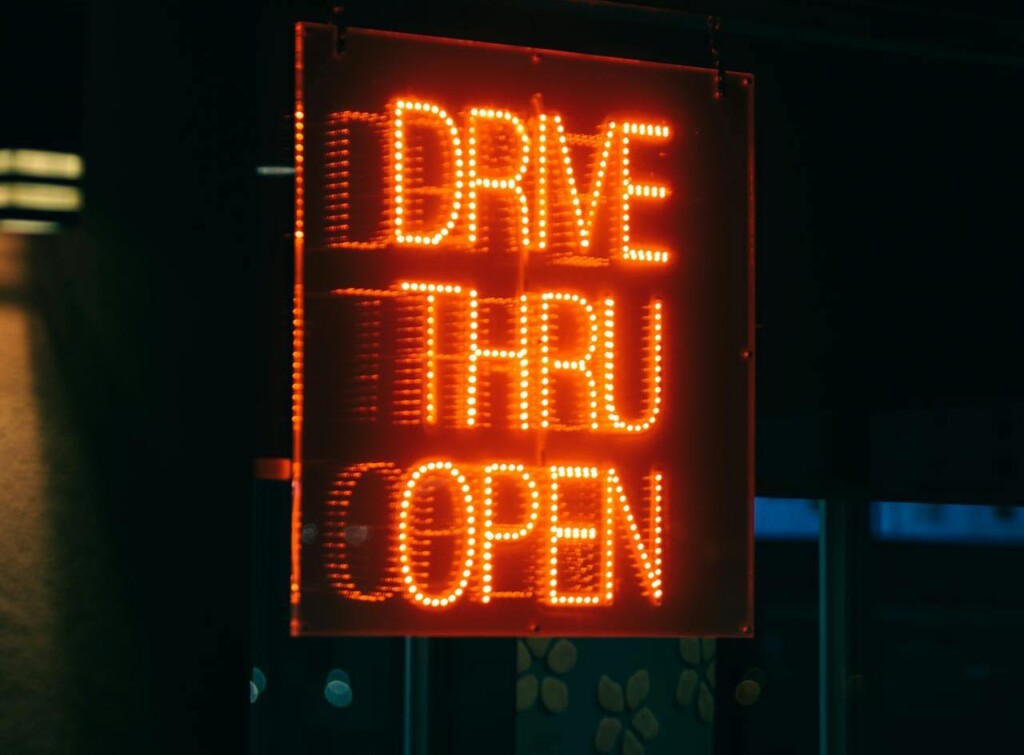
Drive-thru stacking requirements across the three Arlingtons highlight how local jurisdictions shape site design through distinct regulatory frameworks. Each jurisdiction brings its own approach to managing vehicle queues and protecting public infrastructure from operational impacts.
In Arlington, TX, we start with UDC Section 5.4.6 for vehicle stacking standards and work through Article 5 requirements for off-street parking standards. The code integrates stacking with broader site elements like lighting, materials, and screening to ensure comprehensive site functionality. In Arlington County, VA, the use permit process becomes the central mechanism for reviewing internal circulation and standing spaces, with recent approvals showing preference for dual-lane systems and dedicated waiting areas. Arlington, MA takes a different path, relying on traffic rules that emphasize keeping queues off public ways while maintaining safe operations near intersections, crosswalks, and loading zones.
Next steps require targeted verification of applicable requirements. Pull the specific code sections referenced in each jurisdiction: UDC Section 5.4.6 and Article 5 standards for Texas projects, use permit guidelines and zoning ordinance provisions for Virginia sites, and Select Board traffic rules for Massachusetts developments. Align your site plans with stacking counts appropriate to each location, design circulation patterns that meet local standards, and structure curb operations to comply with jurisdiction-specific restrictions.
Ready to navigate drive-thru stacking requirements in your Arlington project? Contact EB3 Construction to ensure your site design meets all applicable standards.

